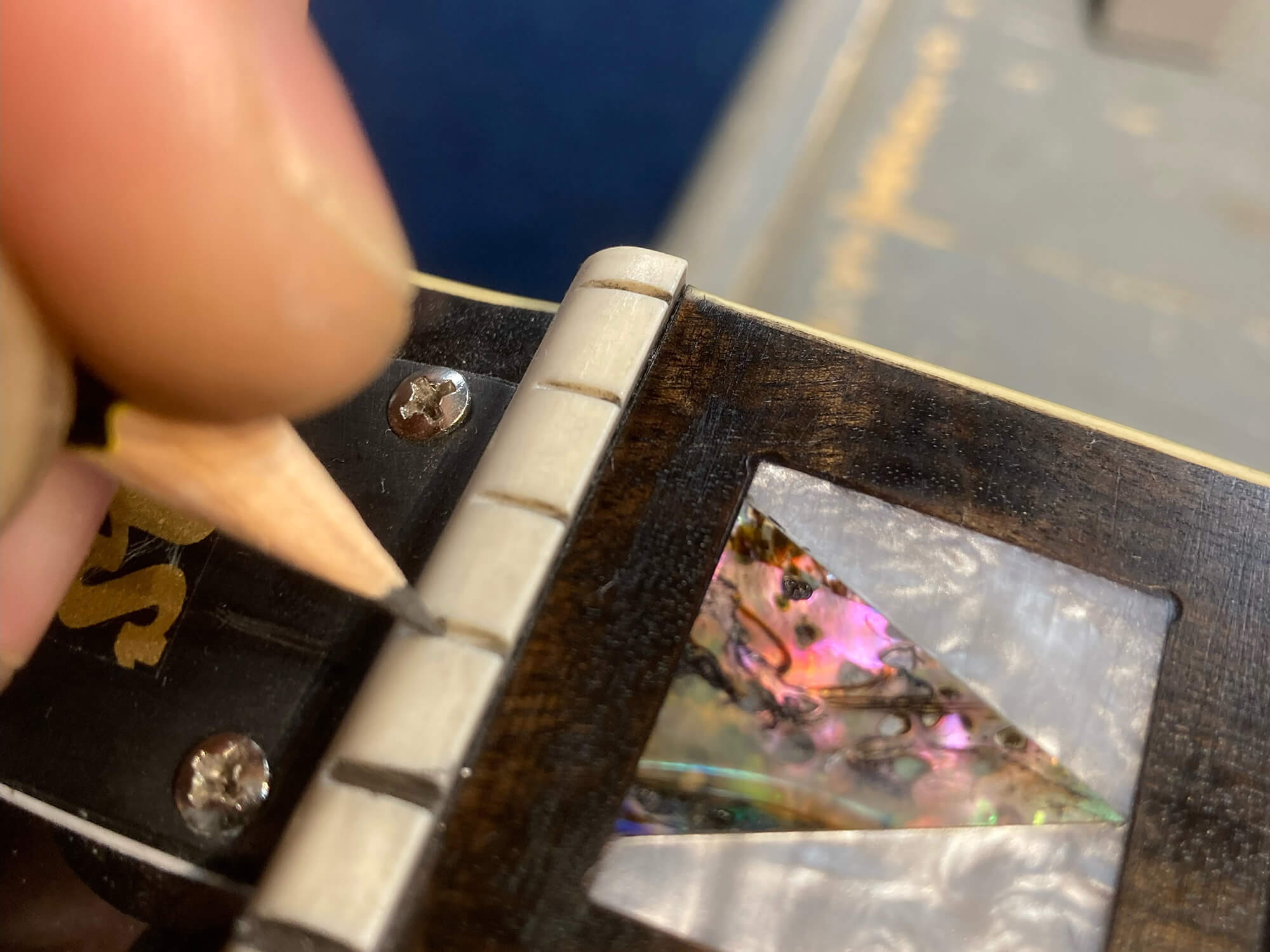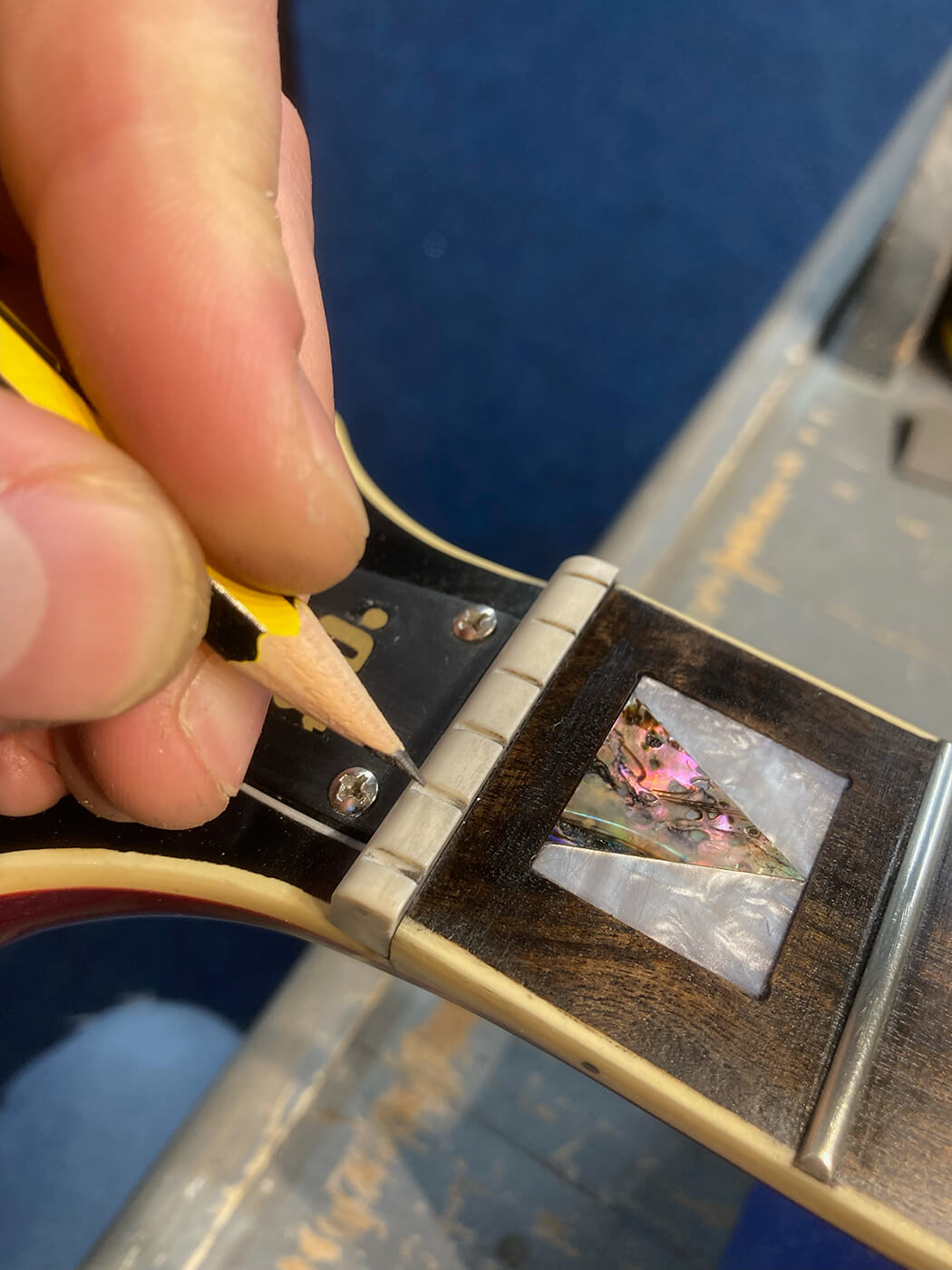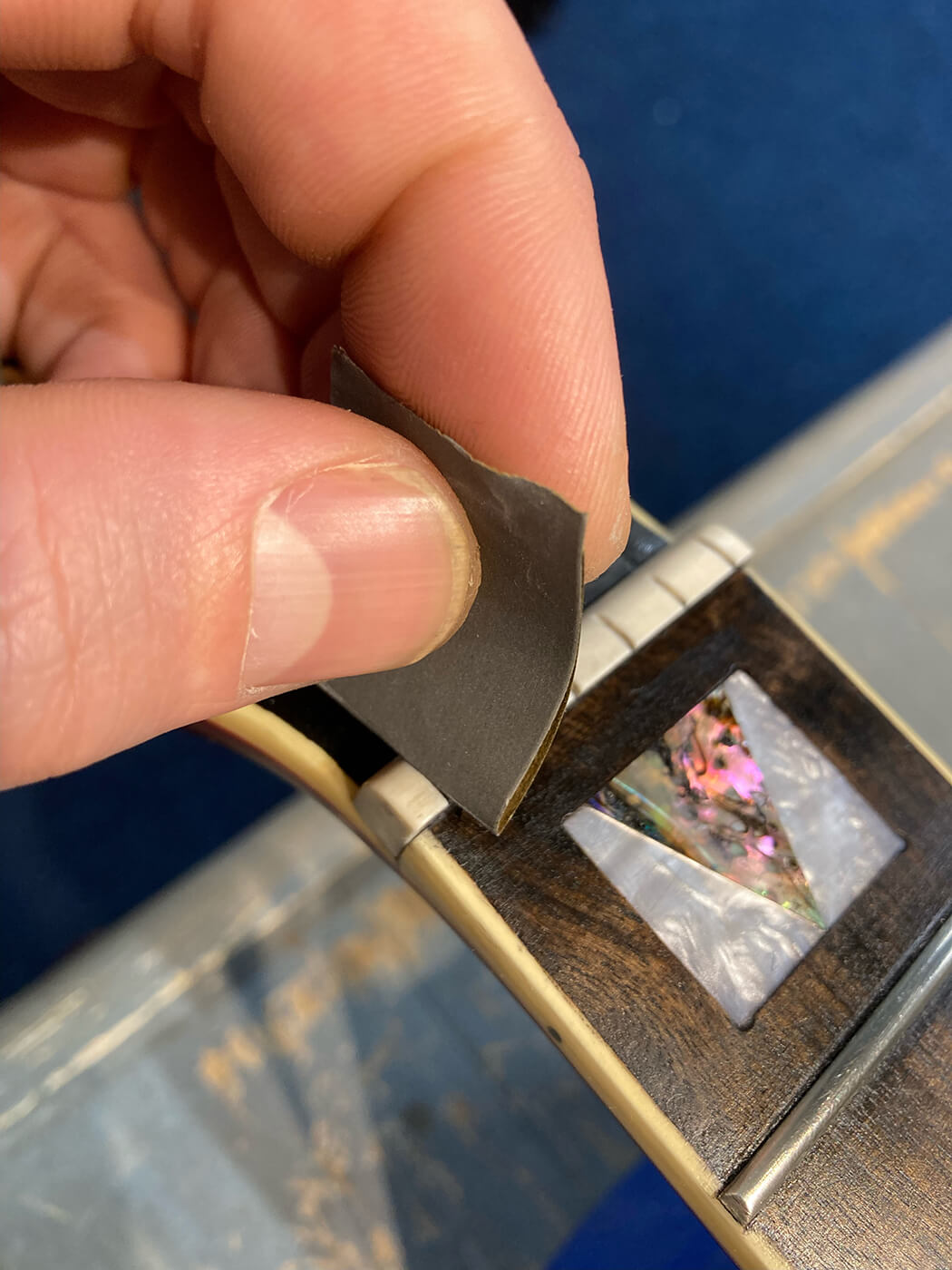Related Tags
DIY Workshop: How to solve problems with your guitar’s nut
A good nut makes for a happy player. But if you’ve got grime in your slot, you can expect issues with tone and tuning. Here’s how to fix them.

Nuts! You’ve probably heard the term. But what many guitar players don’t understand is that the nut is the unsung hero of any guitar setup. In this article, I’ll show you the steps you can take in order to perfect your guitar’s nut.
The nut is located at the top of the fretboard and is often made from bone, synthetic bone, nylon, plastic, brass, or steel. But this isn’t just a comfy place for your strings to sit; there’s minute string movement happening through the nut as you play.
There are a few variants, including locking and roller nuts, which you’ll usually find on guitars with elaborate tremolo systems. Roller nuts were a popular upgrade in the 1980s and 1990s for players such as Jeff Beck and Van Halen, who relied on stable tuning and pitch after doing outrageous dive bombs. There are issues with roller nuts, however – they aren’t designed to take heavier string gauges, which will be off-putting for some players.
On that note, tuning issues are often caused by nuts that are leading to friction within the string slots. There are several reasons a nut might give you issues with tone and tuning. The most common is a badly cut string slot. If you’re using heavier, thicker strings, too, for example, be aware that they won’t always fit in a standard nut, which hasn’t been designed to accommodate them.

Nuts generally last a long time but they won’t last forever. When the nut slots become too worn, you’ll get a lot of fret buzz and other undesirable sounds.
Another common issue with nuts is that dirt from your guitar’s strings can gradually make its way up to the nut and get settled. That’s right: those black deposits in the nut slots are your dead skin and sweat. You’ll want to take care of this, as it not only causes increased friction but does no favours for your guitar either.
If you find you’re getting an erroneous ringing sound from some of the strings, and you can’t find anything fouling the string at the nut or the bridge, try removing the string and inspecting the nut slot. Clean the slot and this should put a stop to that annoying ringing.

So with all of these potential problems, how can you sort the issues yourself?
A good setup is important and should take care of most of these issues then and there. But if not:
- Get a new nut. Install either a retrofit nut, which may require some shaping to fit your guitar, or a brand-new hand-carved bone nut. Replacing a nut can be laborious, and repair shops will charge a considerable amount for it. If you have no experience or a completely screwed nut, get a replacement nut added as part of a setup.
- Repair the slots on the existing nut. This repair isn’t as good as full replacement but can be a temporary fix. It involves using superglue and bone dust or bicarbonate of soda to fill the string slots and re-cut them. Using a good set of nut files is vital to ensure accuracy.
- Smooth out the existing slots to eliminate issues with tuning and tone.
The latter point is one that you can try yourself, for little money and with limited experience. Examine the nut and check whether the slots are too low and your strings are touching the first fret. If so, a nut replacement is your best bet.
If you’re keen to break out the superglue and soda, be sure to protect the area around the nut, as things can get messy quickly. You’ll also need to invest in a good set of nut files, Be warned, though, that making mistakes here can exacerbate the problem, which will likely result in you needing a new nut anyway.
Once you’ve taken the strings off your guitar, examine the slots and check that there are no obvious signs of wear or any poorly cut slots. A shoddy cut slot basically won’t allow the string to travel in a nice uniform line through the nut, which in turn will cause tuning issues.

Take a few small pieces of 800-1000 grit wet-and-dry paper and fold them in half. Use the folded part to gently rub back and forth in the nut slot until it’s clear of debris. What you’re doing here is removing anything that might block the slot or affect the string’s passage through it.
Once you’ve cleared the slots, sharpen a pencil and rub its lead throughout. By inlaying the slots with a layer of graphite, the strings should better glide back and forth through them. There are many proper products out there designed to lubricate the nut but they’re more expensive than a pencil, which does the job perfectly.
Be sure to restring your guitar properly for accurate tuning, too – that means no overlapping winds on the string posts. This will make for greater tuning stability.
If you’re still having issues with the nut after your efforts, take it to a reputable repair shop and let them sort it for you.
For more guides, click here.
